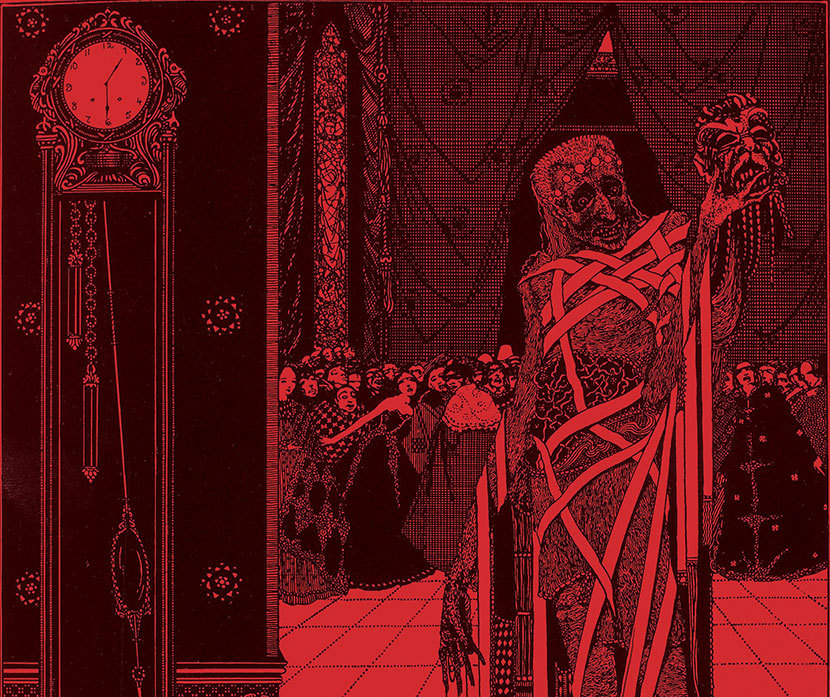Edgar Allan Poe (1809–1849)
From Selected Tales, with The Narrative of Arthur Gordon Pym

“It’s almost too on the nose,” wrote David Ulin recently in the Los Angeles Times. “There’s not much to ‘The Masque of the Red Death,’ which was published in 1842: The story runs just 15 paragraphs, barely 2,300 words. Yet in that narrow span, Poe offers a cautionary tale about humanity in a plague time, and the wages of inequity and denial.”
For all its brevity, “Masque” has remained one of Edgar Allan Poe’s most famous stories, and it has (for obvious reasons) been much in the news this year. Yet, despite the simplicity of the tale and the obviousness of its “moral,” the story has spawned hundreds of pages of commentary on Poe’s possible sources, the story’s obscure references, and its more ambiguous meanings. One prominent school of critics believes that Poe meant the story as a parody, or a pastiche, or perhaps even an homage to Nathaniel Hawthorne, since it seems to combine several elements and even phrases from stories in the collection Twice-Told Tales, a book Poe reviewed in the same issue of the magazine in which “Masque” appeared.
Even if Poe lifted bits of Hawthorne to create his tale, the result is something else altogether—a haunting, prescient fable that couldn’t have been written by anyone else. We present “The Masque of the Red Death” as our Story of the Week selection.



